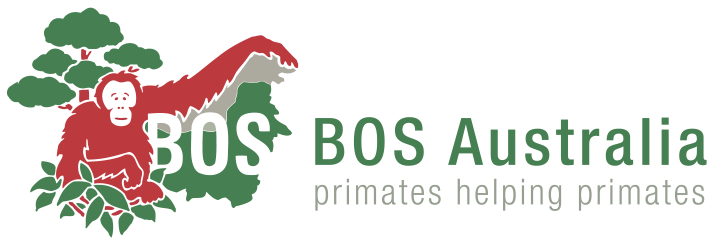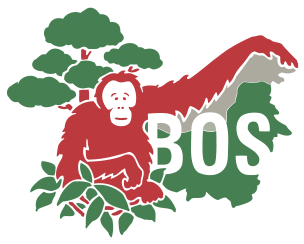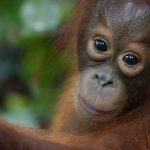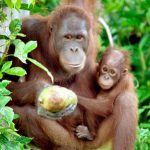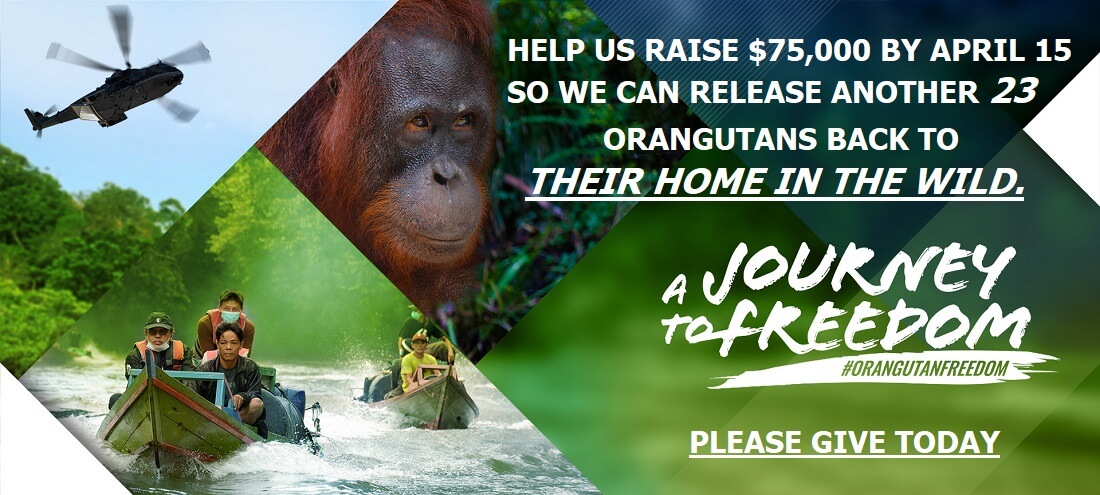A vacation with a purpose
The following article outlines the thinking behind the Samboja Lestari model.
A vacation with a purpose
Sustainable Business.com: Cameron Burns – 6th August 2008
Amory Lovins, Chief Scientist at Rocky Mountain Institute, traveled to Borneo on his vacation to visit a world-class organization working to protect orangutans. What he found was an inspiring story about rainforest rehabilitation and sustainable economic development.
Amory Lovins has long been a fan of “higher primates”-species that use their intellect for the benefit of their communities and the environment, even if inadvertently. One of his favorite such creatures is the orangutan (Pongo abelii and Pongo pygmaeus;). So, when they had some vacation time in May, Amory and his wife Judy decided to travel to Borneo “to hang out with our orange swinger buddies.”
The couple visited a number of outposts of the Balikpapan Orangutan Society/Borneo Orangutan Survival Foundation (BOS), one of the world’s leading organizations dedicated to protecting and advocating for the orangutan and their habitat.
Characteristically, while Lovins was on a personal trip, he ended up learning as much as he could about rainforest rehabilitation and the remarkable attributes of the modest sugar palm-both of which tie into Rocky Mountain Institute’s approach and belief that ecosystems are vital, resilient, and reparable.
At one of the BOS sites, Lovins explains, “They showed us … a 19- square-kilometer lush rainforest that [the] staff has rapidly created, one square meter at a time. Nobody knew this was even possible.”
As Lovins tells it, the land in East Kalimantan on which BOS’s experimental rainforest was established had been repeatedly logged and burned. About the only thing left was Alang-alang (Imperata cylindrica), a species of razor- edged, silica-rich grass that secretes cyanide, depletes soil nutrients, and is almost impossible to get rid of.
But in the early 2000s, BOS founder Dr. Willie Smits discovered that he could kill the grass in a year and a half by shading it out with fast-growing acacia trees, which can then be harvested and used in construction. Once the land was shaded, BOS staffers were able to create a local-flora understory that held water, moderated temperatures, and began building duff, the partly decayed matter on the forest floor. Ultimately, the team planted 1,300 species of trees- millions of them, more than a thousand per day-along with soil mycorrhizae and other microbiota to stimulate growth. Some six or seven years later, during the Lovinses’ visit, the trees were maturing and some had reached full height.
“You could just about see the forest grow,” Lovins says. “It didn’t have the density and diversity of insects and birds that you have in a mature primary forest. But they’re coming in and already there are 137 bird species, nine primate species, and they’re all bringing seeds for whatever was missing… When reintroduced, the orangutans, which are the capstone species, actually farm the forest. They excrete the seeds of what they want to grow where they want it to grow. So when they revisit that fig tree when it’s ready to harvest, it’ll also have this other kind of tree right next to it that they really like to eat the fruit of at the same time and fruits about the same time. The rainforest and the orangutans all coevolved.”
What will protect the forest from the rampant illegal loggers, whom the Lovinses saw at work nearly everywhere they went? The local people, because Dr. Smits’s strategy so bases the project’s design on their welfare, and makes them so much better off, that now they won’t allow wood thieves, however powerful, to destroy their newfound livelihoods in agroforestry.
In addition to these insights, Lovins also learned about the sugar palm (Arenga saccharifera), a promising biofuel feedstock. To combat deforestation, Dr. Smits began researching what could grow in a complex rainforest, where soils can lack humus, sunlight can be scarce, and harvesting is tricky. Sugar palm, he discovered, grows very well in rainforest settings, is not a seasonal crop, and requires careful manual tapping (so harvesting it creates year-round jobs).
Dr. Smits’s research suggests that sugar palm can produce 19 tons of ethanol per hectare per year (or much more with selection), far outdistancing oil palm, which can produce 4.7 tons, and jatropha, which can produce 4.3 tons-both of which are typically considered excellent crops for biofuels (sugar cane, by comparison, produces about 3.5 tons of ethanol).
But those fuel crops are suitable for monoculture, and rainforest is often cleared for oil-palm plantations (in Borneo, generally as an excuse, not an intention: the hidden central aim is to steal timber). Sugar palm, requiring diverse forest around it to flourish, is thus a way to grow the energy crop-and scores of important medicinal and other crops- while protecting, not destroying, biodiversity.
Making biofuel from sugar palm would also create a lot of jobs. According to Dr. Smits’s calculations, sugar palms provide at least 50 times more jobs per hectare than making biofuel from sugar cane because of the manual tapping. That tapping, he concludes, “is affordable due to the [sugar palm’s] much higher productivity.”
Cottage biofuels industry or not, Lovins says the main takeaways from his trip are: “Yes, you can restore rainforests, which are vital to biodiversity and climate, and you can integrate ecological and economic and cultural restoration very successfully by making the welfare of the local people your top priority. [It’s] kind of like Gandhi-ji’s remark that if you look after the poorest, everything else will look after itself.”
